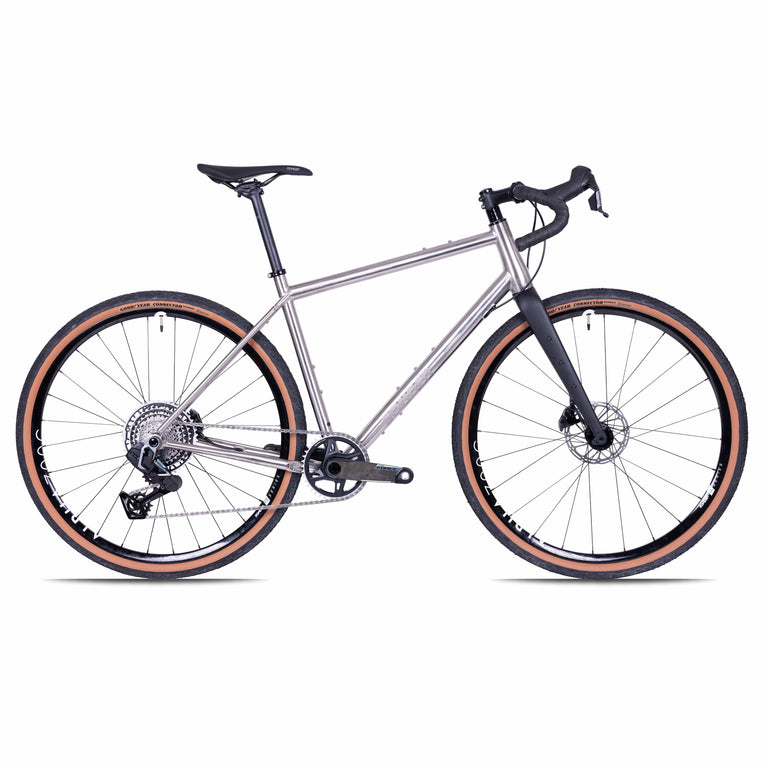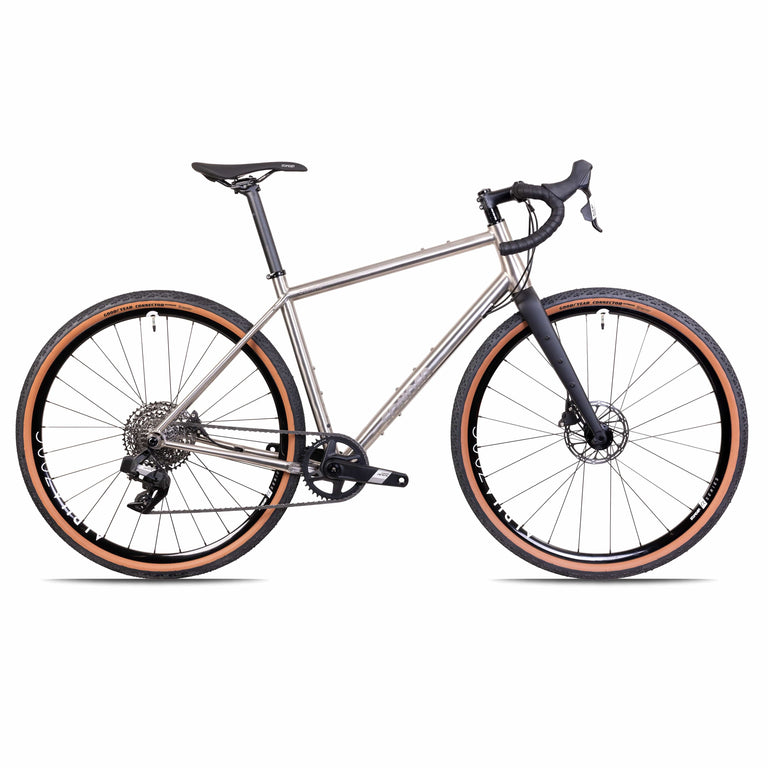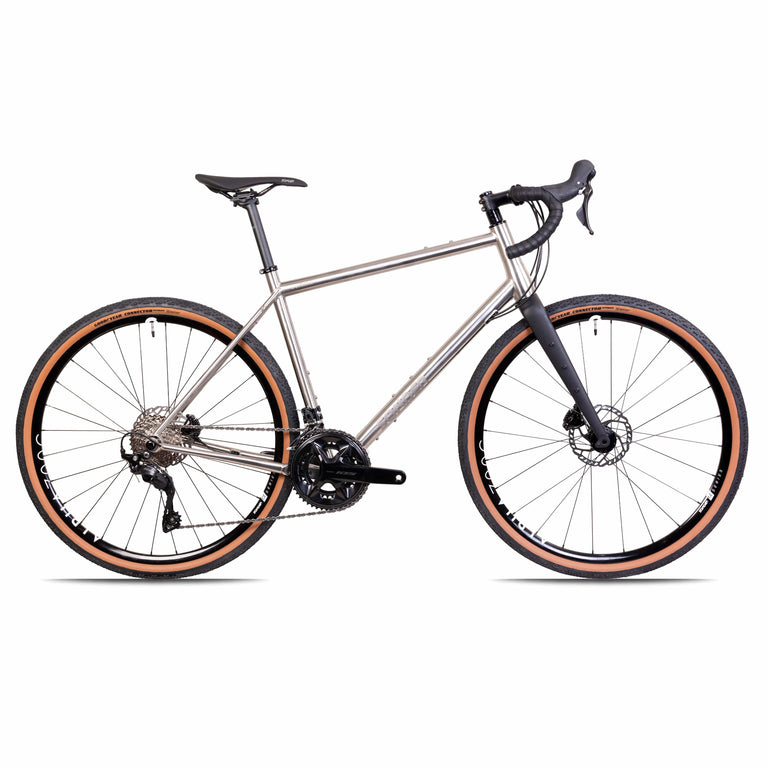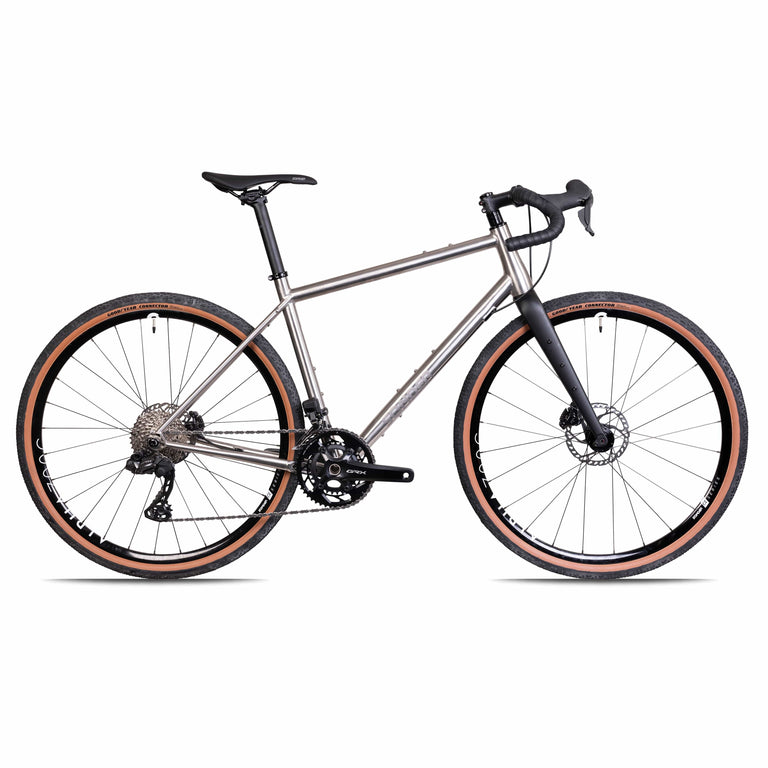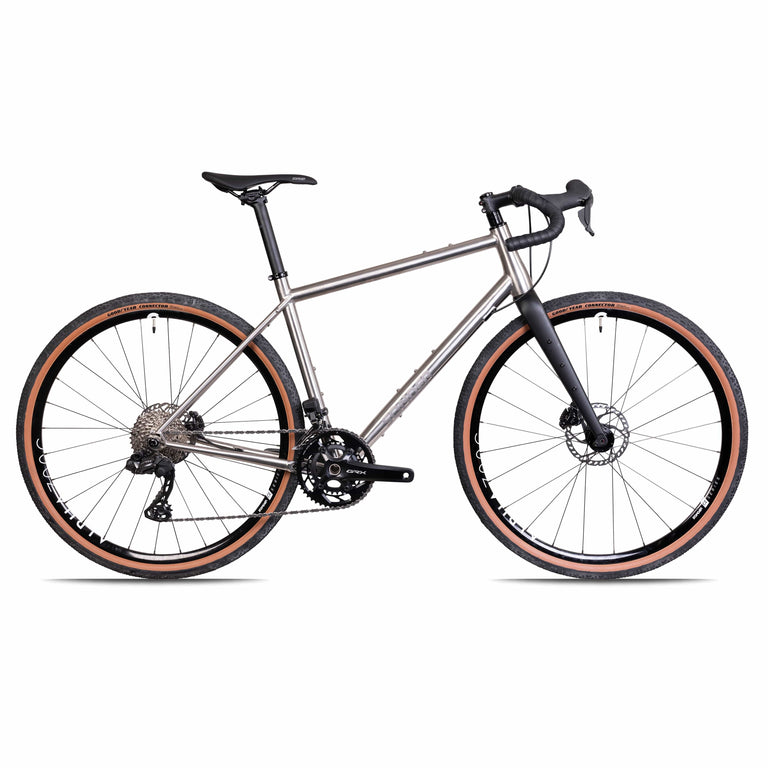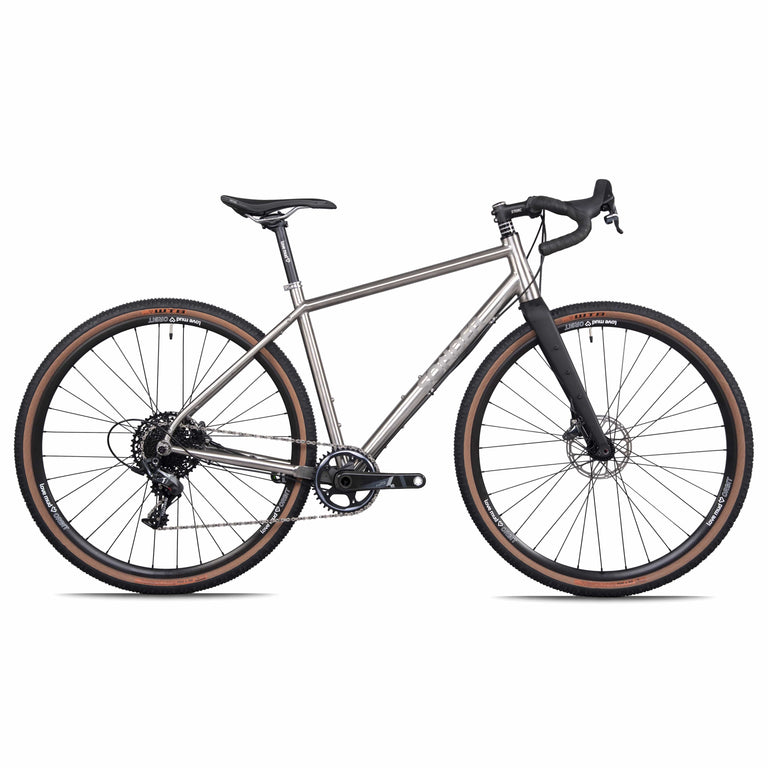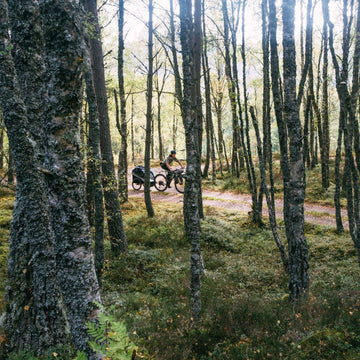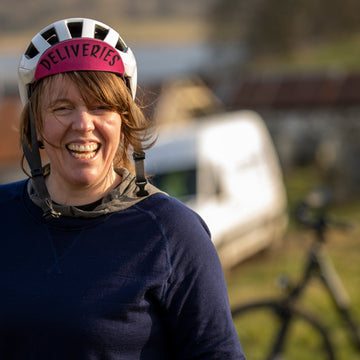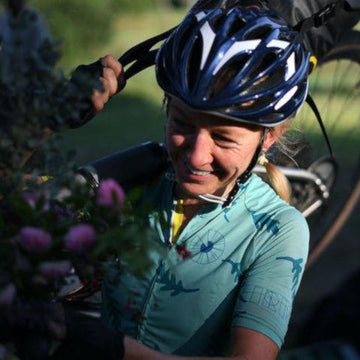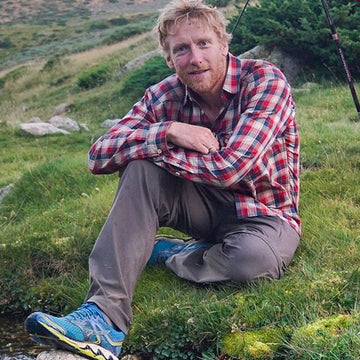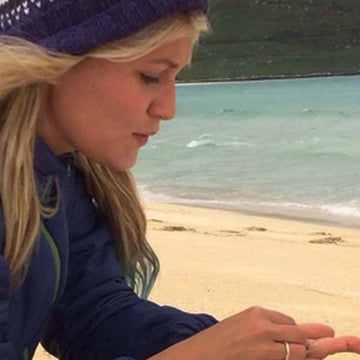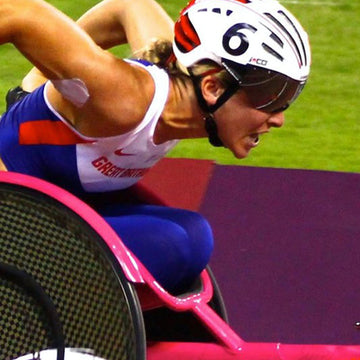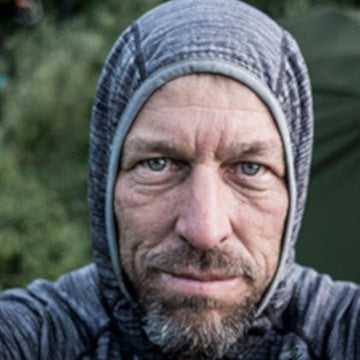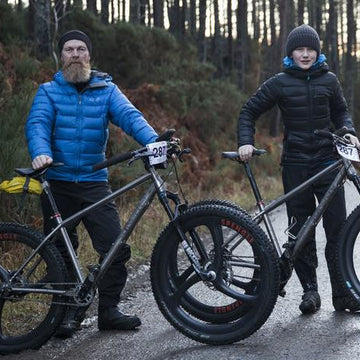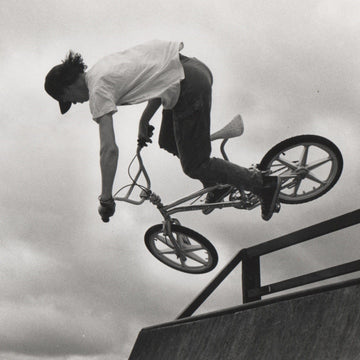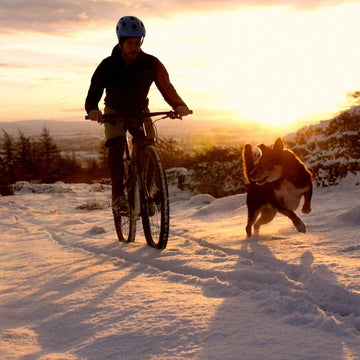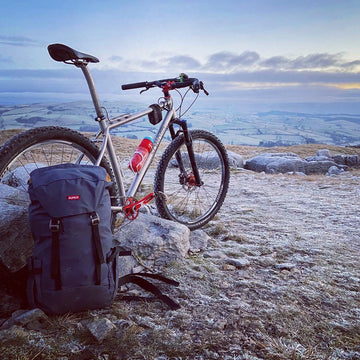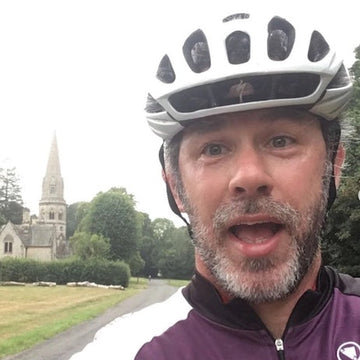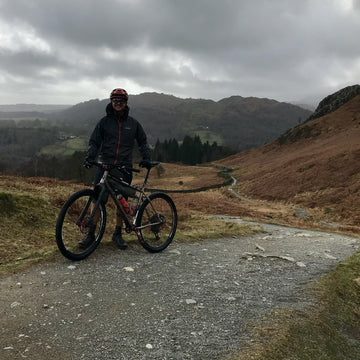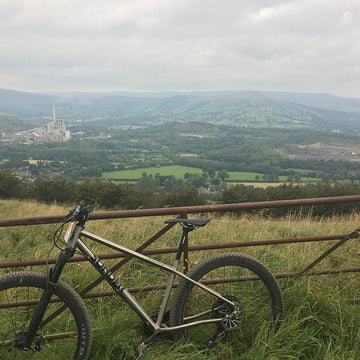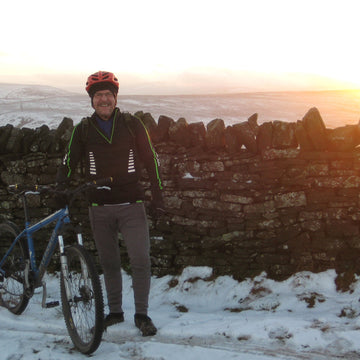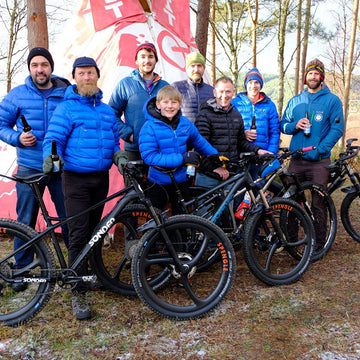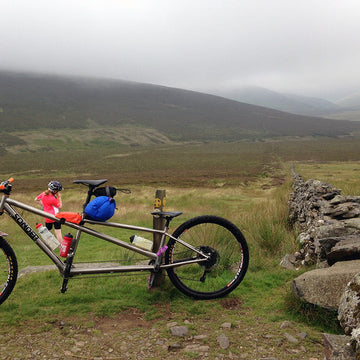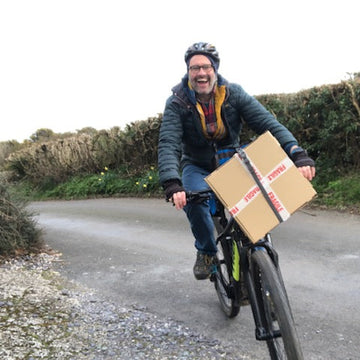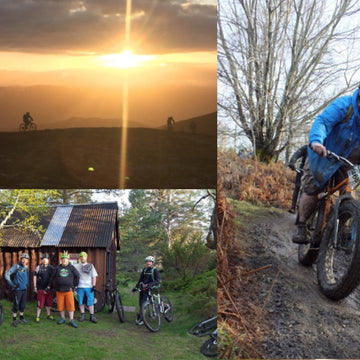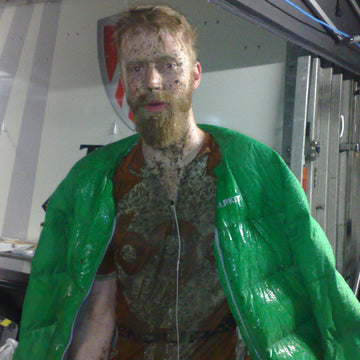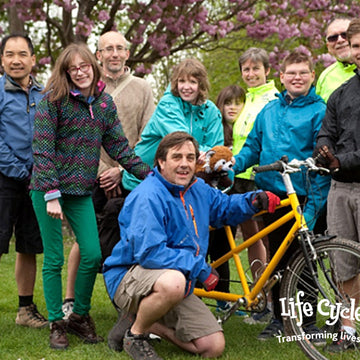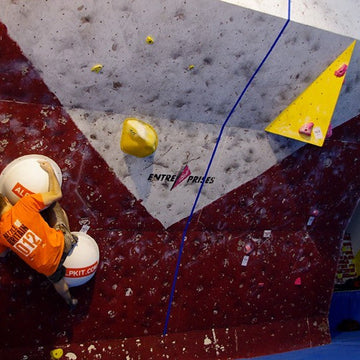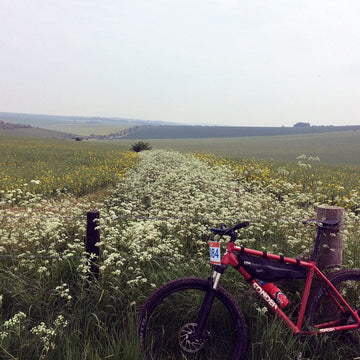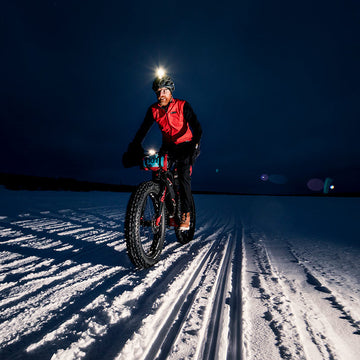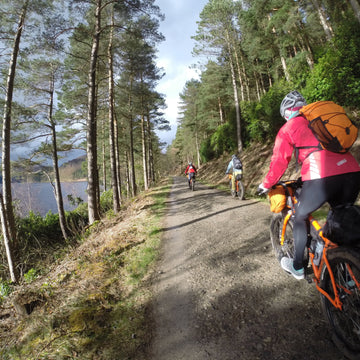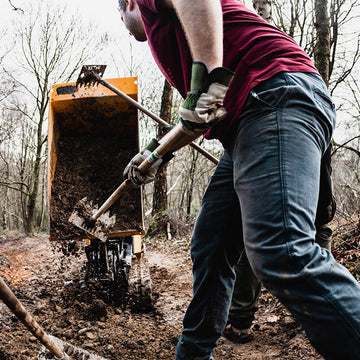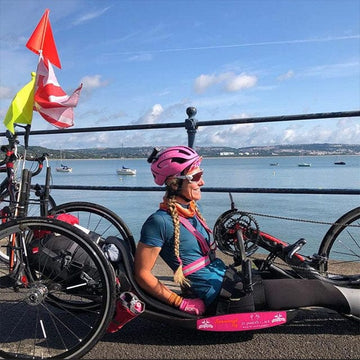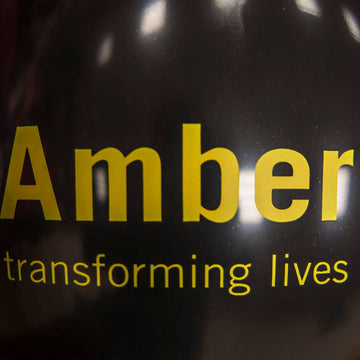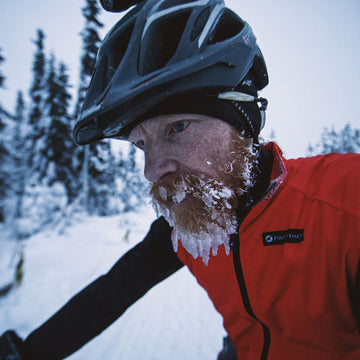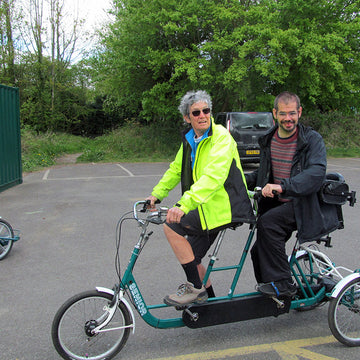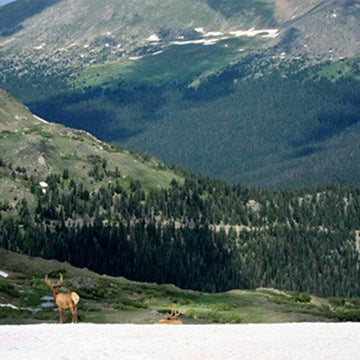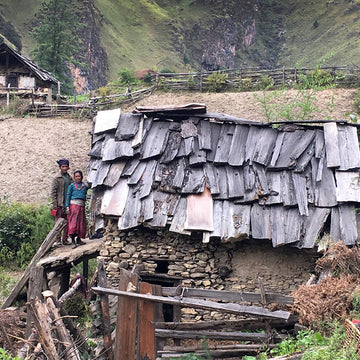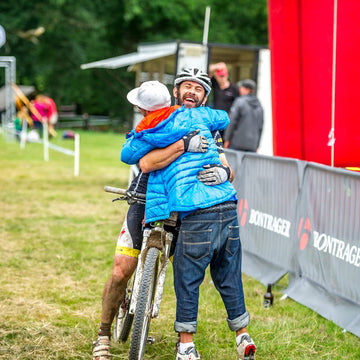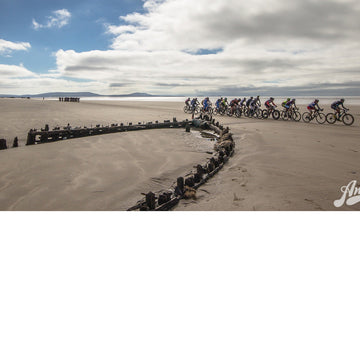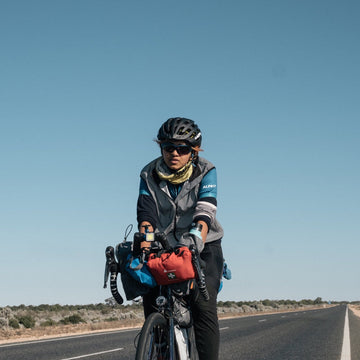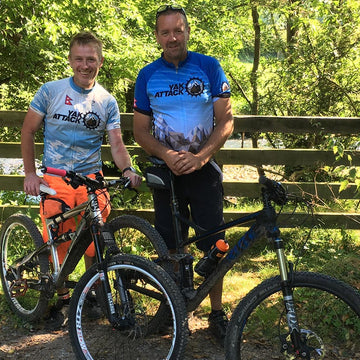
A Calling to the Arctic - Steve Bate guns for first place at the Rovaniemi 150
I tell Ibrahim to turn on the GoPro, and I turn my head and watch bikers, skiers, and runners disappearing past us up the frozen river in the flat white light. Not the start I had hoped for.
I lie my bike on the snow, take a deep breath and remind myself not to panic. but 2km into a 150km race I have a flat tyre and I’m losing time. I’ve fixed hundreds of punctures, but with only one spare tube and a few repair patches, I need to get it this one right. I pump air into the inflating tube making sure it seats properly on the bead, my eyes flicking back and forwards from the wheel in front of me to the racers disappearing into the distance and I can tell Ibrahim (my sight guide) is getting worried.
Surprisingly quickly, the 4.8” tyre is inflated and ready to go, albeit at a higher pressure than I would have liked - not so efficient, but I couldn't risk abother puncture. I pick up my bike and wrestle the wheel back into the drop-outs. 15 minutes later we are back riding.
The Rovaniemi 150 is an adventure race in the north of Finland, lying just inside the Arctic Circle. Participants can choose from 3 routes to run, ski or cycle: 66km, 150km, 300km. The unpredictable, if not hostile, environment makes it mandatory for racers to carry an arctic-rated sleeping bag and sleeping mat for safety. The event is in its seventh year and has endured a range of conditions over the years. Unfortunately, according to race organiser Alex, conditions are bad this year. Not terrible, just bad: for us fat bikers that there will be a lot of pushing.
When we ride into the first check point, there are bikes, pulks, and people all over the place. I ask where to sign in and a woman approaches with a clipboard. She writes my race number down (101) and my check-in time, then hands me the pen. I scribble something that looks like Steve under In then the same under Out. She gives me a strange look as I grab my bike and start heading back to the race: she is surprised I’m not stopping by the fire to warm up.

The truth is, I’m not cold. Research and a lot of trial and error has left me with the perfect layering system: a thin base layer, windproof top and gilet is all I’m wearing, paired with bib tights and a thin soft-shell trouser.
The next hour is a blur. I crash a lot on the single track: my front wheel washing out throws me into the fluffy white powder, sometimes sinking up to my knees when I try to stand. I’m always in a rush to get back on my bike, constantly trying to get back to the head of the race to see who is looking strong, who our competition is. Check point 2 appears, this time smaller than the first, no-one around beside two volunteers. They take my number, I sign both boxes and we are gone.
We arrive at check point 3 after a long section riding along a frozen lake, I head over to the fire to find water. It’s been a couple of hours since I’ve had a drink and I can feel my muscles getting sticky: that familiar feeling signalling cramp is not far away.The smoke stings my eyes as I look around for the volunteer to sign in and out: there is only one name on the sheet when I look, and that rider has just left. We are in second.
Our hard riding has paid off but I was hoping there would be a few more riders to share the load of breaking the trail: with over one hundred kilometres to go, it’s a bit early for a heroic break. Not long down the trail we past the race leader - it’s our race to lose now. Pressing on to extend our lead: we are fast on the road sections but I slow Ibrahim down on the singletrack, unable to get purchase with my rear tyre. Often, I jump off my bike and run up slopes, which is more efficient than trying to ride and burn a lot of energy. In a race like this, it’s all about being as efficient as possible. I know the people behind us will be able to ride these sections, so I never stop for a rest. My muscles burn but I can’t stop, taking step after step until it feels firm enough under my feet to jump back on and try riding again.

We notice there is one tyre track in front of us, but we can’t work out why: are we not in the lead? Is there someone else that I missed on the sign in sheet?After a couple of hours, we realise that it’s one of the guys riding the 300. I’m impressed that he is leading the race, but think to myself that he has pushed himself far too hard, too early. I lose track of which check points are which, signing in and out, filling water and drinking as much as I can while I’m there - my bottle is freezing up and sometimes I go for a couple of hours without water.
We arrive at ‘the bridge of doom’,a narrow bridge crossing above a flowing crystal clear river. It is less than a metre wide, and you can see through the timber strides down to the icy waters. I step off my bike and slowly make my way across the creaky wooden structure, holding my breath. Next, a twisty narrow tight section through the trees. This section isn’t packed down by the snowmobile so we sink deep into the soft snow. Pushing our bikes, Ibrahim guides me through the maze, warning me of branches at face height and big holes where our friend in front has fallen up to his waist. It seems to last forever. I feel grateful for pushing my bike. The falling dusk is a game changer. This is the bit that I’d been worried about; this is the bit where I knew I would learn about myself in these conditions. This is the reason I’m here: to fight the darkness, to struggle, to ask myself questions. My helmet light makes reading the trail easier than the flat white light of day, and I scan for the best line through the snowy singletrack. My eyes work overtime trying to stay focused, but I don’t realise how hard this is for them until much later. We ride and we push, we push more and we ride. I fall off a lot, but the landings are always soft. Sometimes I get a leg down, but it disappears in the soft snow up to my thigh, the bike falling on top of me and trapping me for a few seconds until I wriggle myself free. I try to relax, but I know that speed is of the essence.
Sonder Bikes
Camino Al Apex1 AXS XPLR
- Sram Apex AXS XPLR 12-speed groupset
- Sonder Nova I25 Gravel UK Made wheelset
Camino Al Rival AXS XPLR
- SRAM Rival AXS XPLR 13-speed groupset
- Sonder Alpha I25 Gravel UK Made wheelset
Camino TI Force AXS XPLR
- SRAM Force XPLR 13-speed groupset
- Sonder Alpha I25 Gravel UK Made wheelset
Camino TI Rival AXS XPLR
- SRAM Rival AXS XPLR 13-speed groupset
- Sonder Alpha I25 Gravel UK Made wheelset
Camino Al Apex1 Flat Bar
- SRAM Apex 12-speed groupset
- Sonder Nova I25 Gravel UK Made wheelset
Camino Al 105
- Shimano 105 R7120 12-speed groupset
- Sonder Nova I25 Gravel UK Made wheelset
Camino Al GRX1
- Shimano GRX 610 12-speed groupset
- Sonder Nova I25 Gravel UK Made wheelset
Camino Al GRX2
- Shimano GRX 610 12-speed groupset
- Sonder Nova I25 Gravel UK Made wheelset
Camino Al 105 Di2
- Shimano 105 R7170 Di2 12-speed groupset
- Sonder Alpha I25 Gravel UK Made wheelset
Camino Al Frame And Fork
- 6061 aluminium frame
- Gravel geometry
- Carbon monocoque fork
- Huge tyre clearance
Camino TI 105
- Shimano 105 R7120 12-speed groupset
- Sonder Alpha I25 Gravel UK Made wheelset
Camino TI GRX2
- Shimano GRX 610 12-speed groupset
- Sonder Alpha I25 Gravel UK Made wheelset





